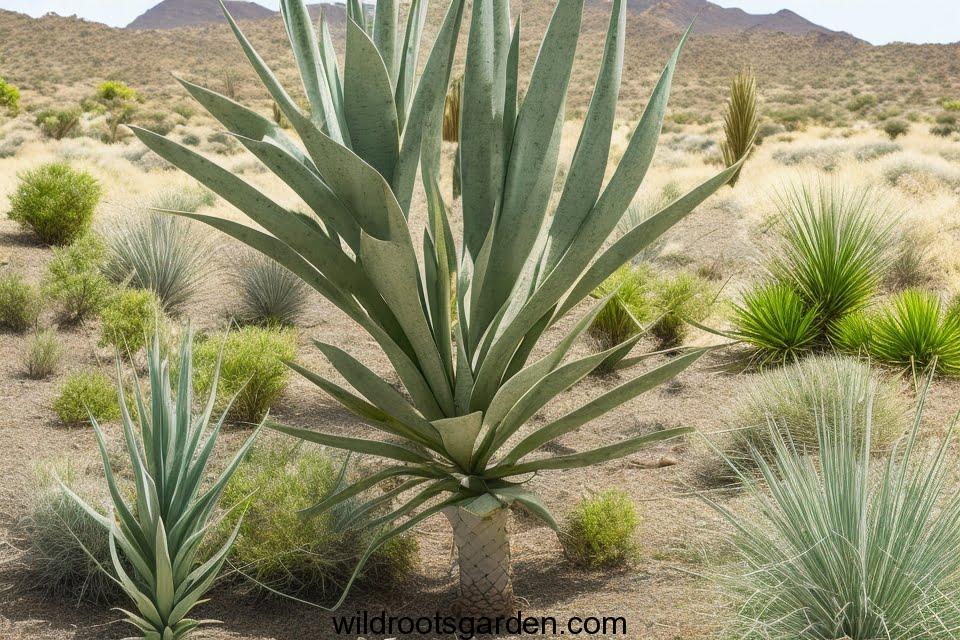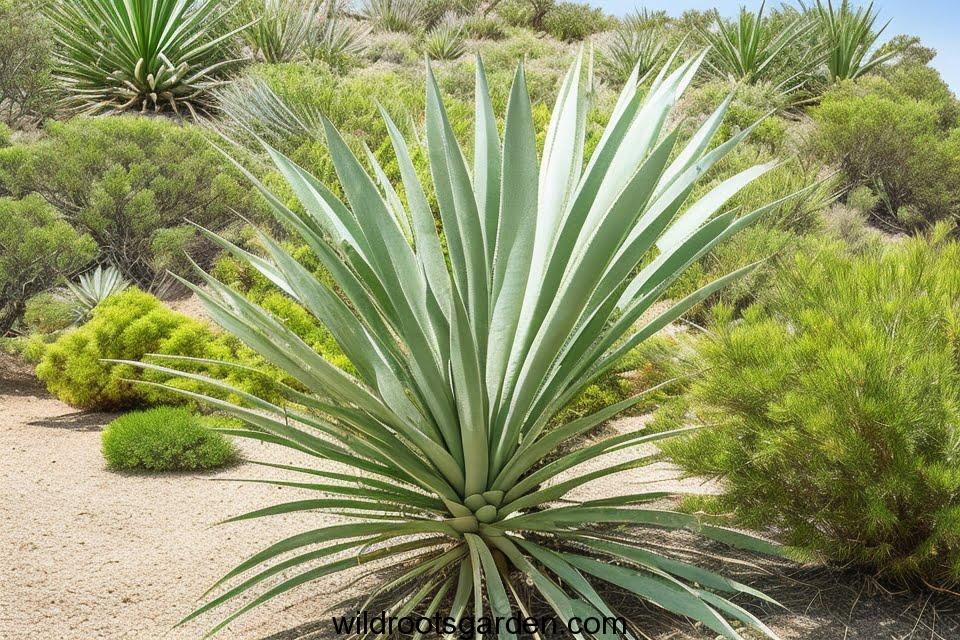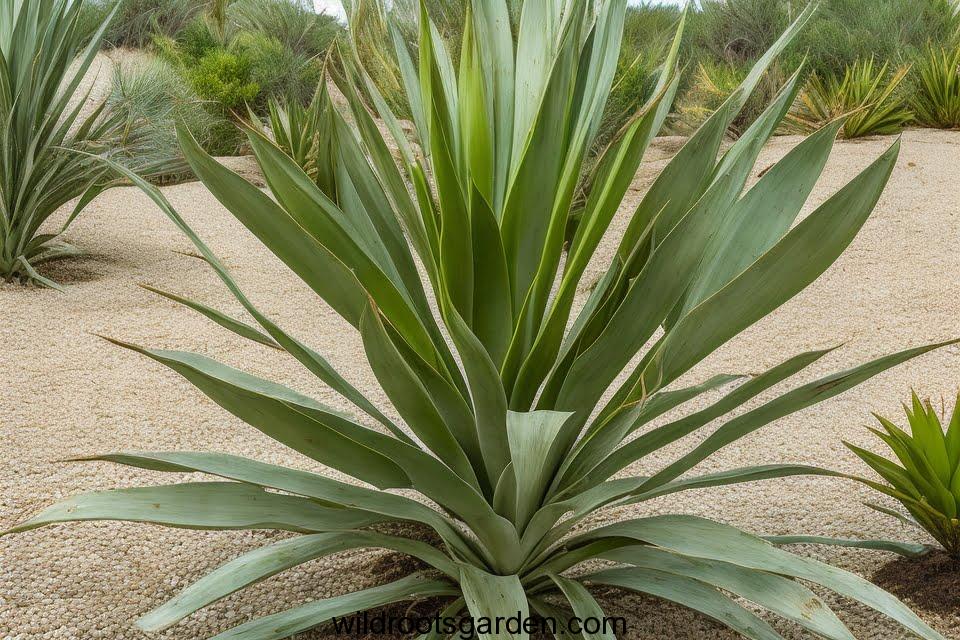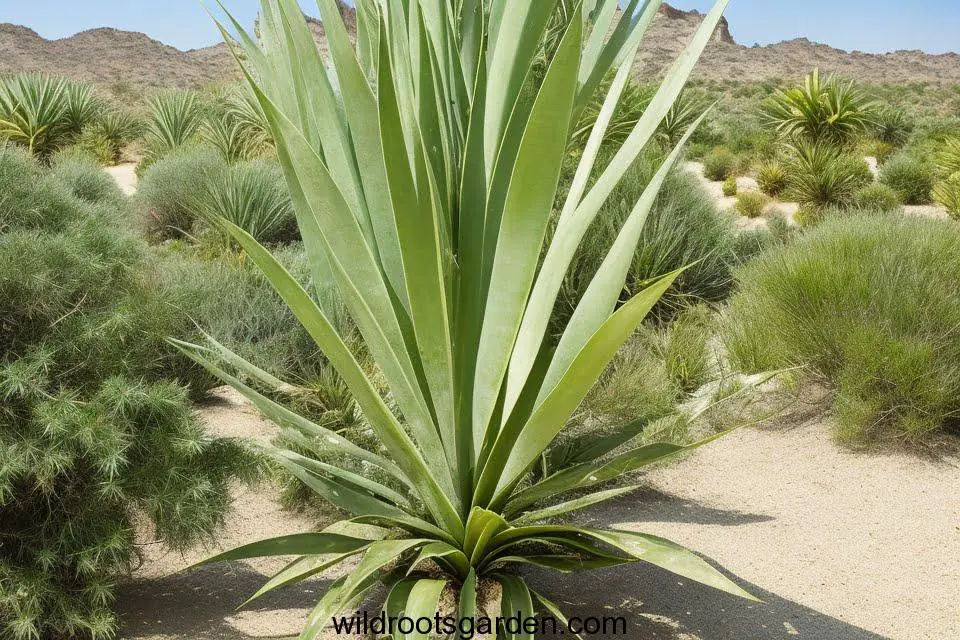Yucca Plant Puncture Wound Treatment. Welcome to our in-depth guide to treating puncture wounds from yucca plants. Despite having a beautiful look, yucca plants can unintentionally produce painful puncture wounds. We examine the typical causes and signs of Yucca-related wounds in this comprehensive guide, along with step-by-step advice on how to effectively clean, disinfect, and treat these wounds. We’ll also examine efficient methods for dealing with pain and highlight symptoms that demand medical care. Get the knowledge you need to confidently treat puncture wounds from Yucca plants, ensuring a speedy recovery and enhancing general well-being.
Table of Contents

Yucca plants are well known for their distinctive looks and propensity to survive in dry settings. Yet, handling them carelessly might result in puncture wounds from their sharp leaves. This article will go in-depth on the various ways to treat yucca plant puncture wounds, including urgent first aid, wound care, pain management, and infection warning indications. Also, we’ll go through when it’s important to get medical help and offer ways to reduce the chance of getting hurt again.
Understanding Yucca Plant Puncture Wound Treatment
Yucca injuries can happen quickly. People often miss seeing a sharp blade as they turn their heads. In Melbourne, yucca is commonly used as a non-native accent plant, as it is well-adapted to Australia’s climate. However, the popularity of the plant may be responsible for the frequency of yucca-related bodily injuries.
Over five years, 28 patients were admitted to the Royal Victorian Eye and Ear Hospital in Melbourne for ear injuries involving yucca blades. While the pointed tips of yucca often make people cautious to keep the plant clear from their eyes, they are less conscientious when it comes to the plant tips near the sides of their heads.
The damage yucca spines can cause can be serious, painful, and sometimes permanent. Straight, sharp yucca blades can stab into the ear canal and perforate the eardrum. While punctures to the eardrum (also called the tympanic membrane) are painful, they can heal with time and care. However, yucca spines can penetrate deeper than the eardrum. Once a spine has pierced the tympanic membrane, the tiny and delicate bones of the middle ear can be reached and broken. These fragile bones, the ear’s ossicles, are essential for full and proper hearing. Their small size and precise positioning make it extremely difficult for the bones to mend correctly if damaged. Often, injuries to the ossicles result in permanent hearing impairment.
Yucca punctures that do not harm the middle ear can still cause problems. Saponins in yucca spines can often cause sensitivity and swelling in the area around a puncture. Yucca injuries can also be tender for a week or longer as the body recovers.
What Causes Yucca Plant Puncture Wound Treatment and What the Treatment?
Yucca plant puncture wounds occur when the sharp tips of the plant’s leaves penetrate the skin. These wounds can be painful and may result in various complications if not treated promptly. Understanding how these wounds happen can help prevent future injuries.
Identifying Yucca Plant Puncture Wound Treatment
Little, deep holes in the skin are characteristic of yucca plant puncture wounds. The wound could seem bloated and reddish, and it might be bleeding. To start the proper therapy, it is essential to appropriately identify these wounds.
Immediate First Aid
Immediate first aid is required to treat a yucca plant puncture wound to reduce infection risk and promote healing. The steps are as follows:
Cleaning the Wound
Start by giving the wound a thorough cleansing with running water and light soap. Clean up any dirt or debris that is close to the puncture site gently.
Applying Pressure to Stop Bleeding
Using a fresh towel or sterile gauze, gently push on the incision. This will promote the development of a blood clot and reduce bleeding.
Elevating the Wounded Area
If possible, elevate the wounded area to reduce swelling and minimize blood flow to the injury site. This can aid in preventing further complications.
Yucca Plant Puncture Wound Treatment

To stop the infection and encourage healing, yucca plant puncture wounds must be properly treated. The actions that must be taken are outlined in the following steps:
Assessing the Depth of the Wound
Carefully assess the puncture wound’s depth. While serious wounds may need medical attention, superficial wounds can usually be treated at home.
Dealing with Embedded Yucca Plant Spines
In some cases, yucca plant spines may become embedded in the wound. Use sterile tweezers to gently remove any visible spines. Avoid digging into the wound or causing further damage.
Disinfecting the Wound
Use hydrogen peroxide or an antiseptic solution to clean the wound. Infection risk will be decreased and bacteria will be eliminated as a result. After that, use a fresh towel to gently pat the area dry.
Promoting Healing and Preventing Infection
To facilitate healing and prevent infection, follow these guidelines:
Applying an Antibiotic Ointment
Apply a thin layer of antibiotic ointment, such as bacitracin or neomycin, to the wound. This will create a protective barrier and aid in the healing process.

Covering the Wound
Apply a sterile adhesive bandage or dressing to the puncture wound. Make sure the bandage is big enough to completely enclose the wound and hold it there.
Changing Dressings
Change the dressing frequently to keep it clean and avoid infection. On how often to change the dressing, according to the guidelines supplied.
Pain Management
Controlling the discomfort brought on the yucca plant puncture wounds can greatly enhance comfort while the wounds are healing. Think about the following choices:
Over-the-Counter Pain Relievers
Non-steroidal anti-inflammatory drugs (NSAIDs) such as ibuprofen or acetaminophen can help alleviate pain and reduce inflammation. Follow the recommended dosage instructions.
Topical Anesthetics
Topical anesthetics like lidocaine or benzocaine can provide temporary relief from localized pain. Apply them to the wound according to the product instructions.
Natural Remedies for Pain Relief
Natural remedies like aloe vera gel or cold compresses can offer soothing relief. Apply a small amount of aloe vera gel to the wound or gently place a cold compress over the area for 10-15 minutes.
Recognizing Signs of Infection
It’s essential to monitor yucca plant puncture wounds for signs of infection. Look out for the following symptoms:
Redness, Swelling, and Heat
If the wound becomes increasingly red, swollen, or warm to the touch, it may indicate an infection. Monitor these symptoms closely.
Increased Pain or Discomfort
Persistent or worsening pain beyond the initial stages of healing can be a sign of infection. Seek medical attention if the pain becomes unbearable.
Pus or Drainage
The presence of pus or any unusual discharge from the wound suggests an infection. Consult a healthcare professional promptly.
When to Seek Medical Attention
While most yucca plant puncture wounds can be treated at home, certain situations warrant medical attention:
Tetanus Shot
If your tetanus vaccination is not up to date, or you’re uncertain of your vaccination status, it’s crucial to consult a healthcare professional. They will determine if a tetanus shot is necessary.
Seek Professional Medical Care
If the wound is deep, exhibits signs of infection, or shows no signs of improvement after a few days, it’s advisable to seek medical attention. A healthcare professional can assess the wound and provide appropriate treatment.
Preventing Yucca Plant Puncture Wounds
Taking preventive measures can significantly reduce the risk of yucca plant puncture wounds. Follow these guidelines:
Wearing Protective Clothing and Gloves
When handling yucca plants or working in their vicinity, wear long-sleeved shirts, long pants, and sturdy gloves to protect your skin from potential injuries.
Proper Handling Techniques
Exercise caution when working with yucca plants. Avoid brushing against or grasping the leaves without necessary precautions.
Regular Maintenance of Yucca Plants
Regularly prune and maintain your yucca plants to minimize the risk of sharp leaf tips. Trimming away any damaged or protruding leaves can help prevent puncture wounds.
**Keep in mind that treating puncture wounds caused by yucca plants promptly and correctly is essential. You can reduce the danger of illness and ensure a quick recovery according to the instructions in this thorough guide. But don’t hesitate to get help from a qualified doctor if you see any symptoms getting worse or have questions about how the wound is healing. Your safety and health are our top priorities. Keep an eye out for potential puncture wounds, handle Yucca plants with caution, and utilize this knowledge to confidently treat them. I hope your upcoming journey is safe and healthy.
The best way to prevent yucca injuries is to be aware of the plant’s sharp blades and to take care when handling it. If you do sustain a yucca injury, it is important to seek medical attention immediately.
Here are some additional tips to help prevent yucca injuries:
Wear gloves when working with yucca plants.
Keep yucca plants away from areas where people are likely to be walking or running.
Trim yucca plants regularly to remove any sharp blades.
If you do sustain a yucca injury, clean the wound thoroughly with soap and water and apply a bandage. Seek medical attention if the injury is severe or if you experience any pain or hearing loss.
Safe and Reliable Resources for Yucca Plant Puncture Wound Treatment:
Medical Websites and Organizations:
- Mayo Clinic: https://www.mayoclinic.org/ – Offers comprehensive information on first aid and wound care, including guidance on puncture wounds from plants.
- American Academy of Family Physicians: [https www aafp org] – Provides family-friendly resources on various health topics, including minor wound care and preventing infection.
- Centers for Disease Control and Prevention (CDC): https://www.cdc.gov/ – Offers valuable information on wound cleaning and infection prevention.
Plant-Specific Resources:
- American Society of Plant Taxonomists: [https www aspt org ON American Society of Plant Taxonomists] – Provides detailed information on different plant species, including potential risks and irritants.
- National Poison Control Center: https://poisonhelp.hrsa.gov/poison-centers/find-poison-center – Offers 24/7 access to toxicology specialists who can provide specific advice on plant-related injuries.
- California Poison Control System: [https www poison control org ON California Poison Control System] – Provides comprehensive information on poisonous plants and their potential effects, including yucca.
Additional Tips:
- Clean the wound thoroughly with soap and water.
- Remove any thorns or debris from the wound.
- Apply a cool compress to reduce swelling and pain.
- Elevate the affected area if possible.
- Monitor the wound for signs of infection, such as redness, swelling, pus, or fever.
Disclaimer:
It’s important to note that online resources should not be a substitute for professional medical advice. If you experience any concerning symptoms after a yucca plant puncture, seek immediate medical attention from a qualified healthcare professional.
I hope these safe and reliable resources help you find the information you need for proper wound care and treatment. Remember, prioritizing your health and safety is always the top priority.
Frequently Asked Questions: Yucca Plant Puncture Wound Treatment
Can I use hydrogen peroxide to clean a yucca plant puncture wound?
Yes, hydrogen peroxide can be used to clean the wound. However, it’s important to dilute it before application and avoid prolonged use, as it may delay healing.
Is it necessary to remove all yucca plant spines from the wound?
It’s advisable to remove visible yucca plant spines to prevent infection. However, avoid digging into the wound or causing additional damage.
How often should I change the dressing on a yucca plant puncture wound?
Change the dressing regularly, following the instructions provided with the dressing. Typically, this may range from once a day to every few days, depending on the wound’s condition.
Can I treat the pain from a yucca plant puncture wound with natural remedies alone?
Natural remedies can provide temporary relief from pain. However, if the pain persists or worsens, over-the-counter pain relievers may be necessary. Consult a healthcare professional if needed.
What should I do if I develop an infection from a yucca plant puncture wound?
If you suspect an infection, such as increased redness, swelling, or pus, seek medical attention promptly. A healthcare professional can provide appropriate treatment to address the infection.

